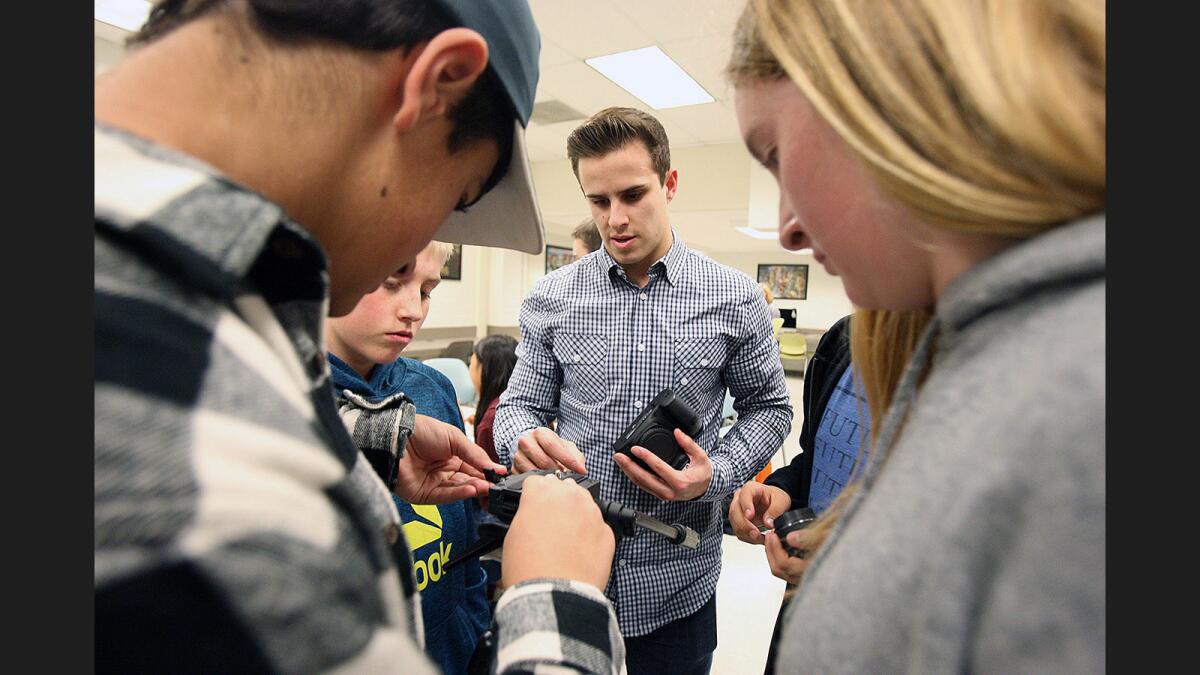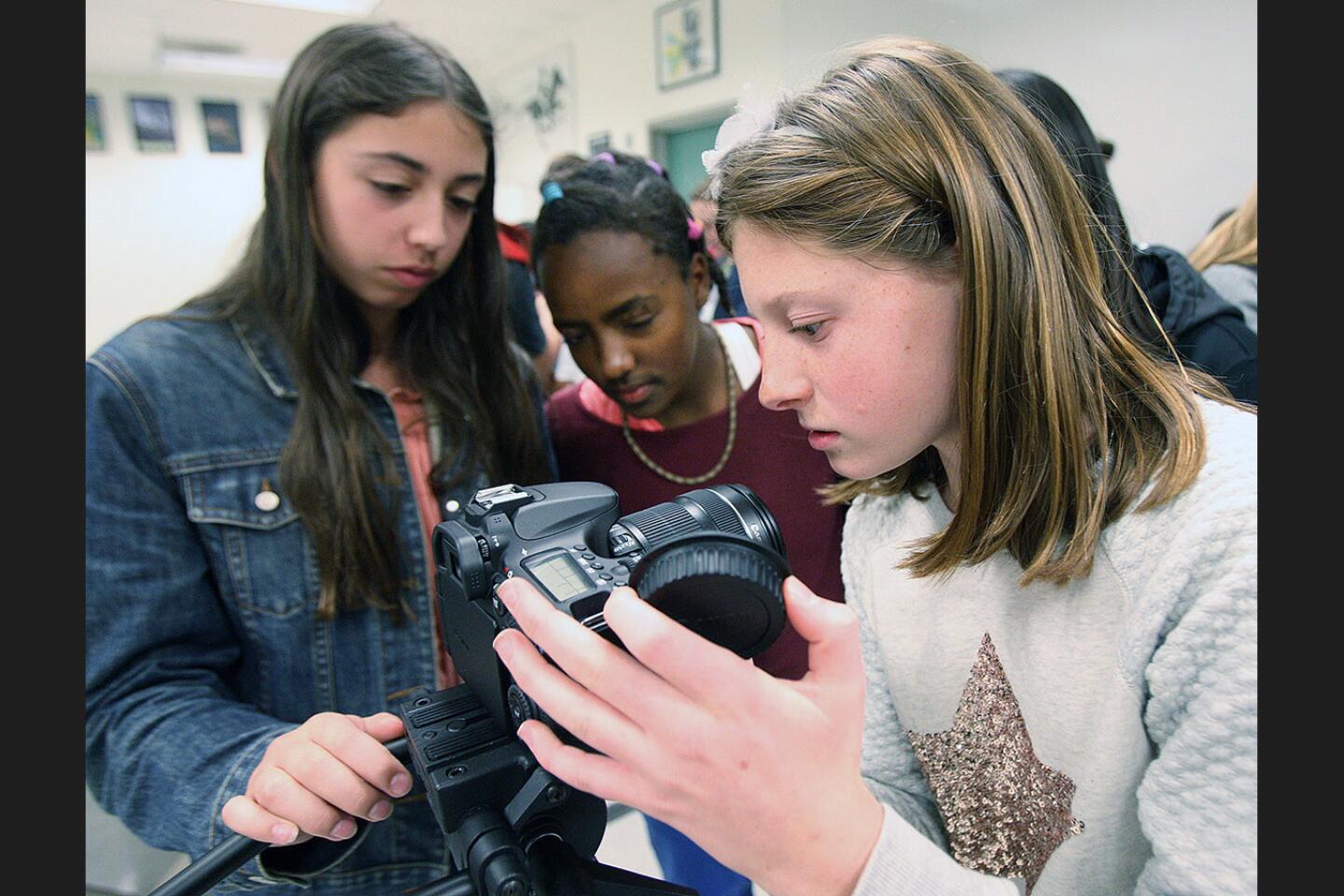La Cañada High grad directs current students’ education in film and TV production

Getting students engaged in what they’re learning at school might be a challenge for some, but not for La Cañada High School teacher Kevin DeSimone.
Hired by the district to teach classes in the school’s new LCTV career pathway, DeSimone is charged with the task of grooming students in grades 7 through 12 into would-be filmmakers and television directors. And given the proximity of Hollywood and Burbank, there’s no shortage of hopefuls.
“I hope, through the classes, they’ll actually be able to make short films they can put into a portfolio and make their (demo) reels,” he said. “Then, when they go into the field they’ll start as a production assistant anywhere, where they’ll be able to learn even more.”
Join the conversation on Facebook >>
A graduate of La Cañada High’s Class of 2010, DeSimone comes from a family that knows the business from the inside. His father Michael has a background in special effects, while mom Mary Anne’s past experience includes working as a screenwriter’s assistant.
During his time in high school, DeSimone was heavily involved in the theater department. He was working as a paraprofessional under LCHS instructor Justin Eick last year when he learned La Cañada Unified School District was preparing to roll out a slate of production-focused classes and needed an instructor.
A communications graduate from CSU Northridge who’d worked in Los Angeles County High School for the Arts’ cinematic arts summer program, DeSimone applied for the job and got it.
“[School officials] told me to basically make it how I wanted to make it, but they wanted to incorporate storytelling, broadcasting, learning technology and communication,” he said. “They really gave me free range to work with what I have around me. So I’ve taken that and started with how to tell a story and how to work with each other.”
Although LCTV’s new class space — a renovated combination of two classrooms that features a recording studio, audio engineering and sound creation rooms and a control room, in addition to a large classroom space — wasn’t fully built until November, students have been learning the basics of camera and production work since school began in August.
A recent visit found a group of seventh- and eighth-grade students learning how to set up and take down a camera and microphone from its tripod. Three Canon EOS 70D digital cameras, each with a 50mm and 135mm zoom lens and its own tripod, were set up so that small groups could take turns practicing the steps.
“You’re going to be switching the lenses out, putting the caps on and making sure I know that you know how to completely take it out, put it together and put it back correctly,” DeSimone instructed the class.
Students set upon the cameras, working in teams to make sure each step was completed. After they’d taken their turns, seventh-grader Tsehay Driscoll and eighth-grader Leslie Dick went back to their table and looked through some of the work they accomplished earlier in the semester.
“We’ve filmed commercials and trailers,” said Driscoll, who joined the class because her dad and sister both work in production and because she loves television.
“I thought maybe I should take LCTV because I love movies, and it’s always been my dream to be a director or an actor when I grow up,” Dick said, showing a dramatic commercial she made for the beverage lemonade.
For middle school students, the courses are simply electives. Once students are high school freshman, they’ll have the option of taking three sequenced courses — LCTV Studio, LCTV Productions and LCTV Professional. Higher level courses are designed to put students in the driver’s seat, according to DeSimone.
“I hope by the end of three years they’ll be able to fly away and do it all on their own,” he said.
--
Sara Cardine, sara.cardine@latimes.com
Twitter: @SaraCardine






